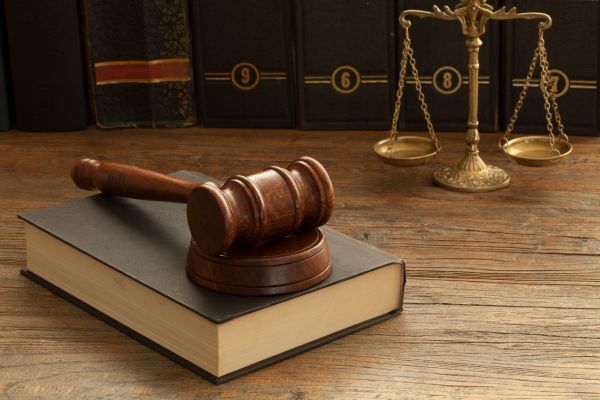Introduction
The law is often perceived as a domain of certainty and order, where rights are protected, duties are enforced, and justice is ultimately served. Yet in reality, the realm of law seethes with ambiguity, a world where the existence of a right, like Schrödinger’s cat, can occupy a strange, “superposed” state: both valid and invalid, alive and dead, until the court pronounces judgment. In Hamlet’s famous soliloquy, “To be or not to be,” Shakespeare dramatizes this very human confrontation with uncertainty and the paralysis it induces. So too, the theatre of the courtroom, with all its scripted arguments and unscripted surprises, reminds us that law is not just a body of rules, but a grand, unfolding drama.
This article reimagines law through three interlocking perspectives, philosophical, quantum, and theatrical, drawing on Indian jurisprudence and international law to show that the paradox of rights is deeply woven into the fabric of legal and social life.
I. The Quantum Cat and the Hamletian Dilemma
Schrödinger’s Cat: Law in Superposition
Erwin Schrödinger’s 1935 thought experiment was designed to reveal the oddness of quantum superposition: until you open the box, a cat inside is, in some sense, both alive and dead. Only the act of observation “collapses the wave function,” resolving the ambiguity to a single, definite state.
Law, in many cases, works the same way. When confronted with statutes riddled with ambiguities, or situations where human rights claims clash, the legal “state” of a person or right is not singular until a court rules.
Hamlet’s Soliloquy: The Paralysis of Uncertainty
Hamlet’s meditation, “To be, or not to be? That is the question”, articulates a universal anxiety: indecision caused by the dread of unknown consequences, a wavering between action and inaction, life and death. In legal terms, litigants and courts often face this Hamletian paralysis when rights are unclear, precedents conflict, or high stakes and ethical dilemmas loom.
The Courtroom as Theatre
The legal process is, fundamentally, a form of performance. Advocates act, witnesses narrate, and judges orate, transforming abstract rights into lived reality. The Dramatic Performances Act of 1876[1], originally enacted to suppress seditious theatre under British rule, reveals how the law has always been concerned with narrative, spectacle, and the power of performance, not merely technical rules.
II. The Paradox of Rights in Indian Jurisprudence
Judicial Indeterminacy and the Living Constitution
The Indian Supreme Court, as the nation’s final arbiter, is no stranger to what might be called “legal superposition.” Cases often reveal not one, but several plausible outcomes, clouding predictability and engendering transitions where a right is both present and absent, affirmed and denied, until judgment is pronounced. This phenomenon is not an aberration, but a consequence of a living Constitution interpreted by judges who bring divergent philosophies and worldviews.
Example: The recurring judicial reinterpretation of similar legal provisions by different benches has led to periods of profound legal uncertainty, demonstrating how finality in law can be as elusive as the state of Schrödinger’s cat.
Landmark Case: The Right to Privacy
For decades, the status of privacy as a fundamental right in India was unresolved, judicial pronouncements wavered, and for every assertion, there seemed to be an equally forceful denial. In 2017, the Supreme Court in Justice K.S. Puttaswamy (Retd.) v. Union of India[2] declared that privacy is an intrinsic part of the right to life and liberty under Article 21, settling years of contradiction.
Until then, the right to privacy hovered in a quantum state: possibly valid, possibly denied, awaiting judicial “observation” to become legal reality.
Human Rights of LGBTQ+ Persons
Section 377 of the Indian Penal Code[3] criminalized “carnal intercourse against the order of nature” for over a century. In Navtej Singh Johar v. Union of India (2018)[4], the Supreme Court decriminalized consensual same-sex relationships, explicitly recognizing the rights to equality, dignity, and privacy. Between conflicting judgments, LGBTQ+ rights existed in a legal twilight zone, simultaneously protected and not, “alive” for some, “dead” for others, until the verdict unified reality.
III. International Law and Rights in Superposition
Human Rights in Global and Local Contexts
Universally, human rights are declared as “inherent” and “inalienable” in international law: Article 1 of the Universal Declaration of Human Rights (UDHR) says “All human beings are born free and equal in dignity and rights”[5]. Yet, implementation hinges on each nation’s legal system. In India, the Protection of Human Rights Act, 1993[6], and various commissions guarantee rights, but only to the extent courts and institutions enforce them.
Thus, like quantum properties, international rights exist in potentia, as ideals, until domesticated and “collapsed” into local judicial recognition.
The Quantum Frontier
Quantum information technologies, such as quantum encryption and computing, pose challenges for both privacy and enforceability of rights, they may undermine current frameworks for data protection. Indian lawmakers, grappling with these challenges, draft new legislation and seek to harmonize with global norms. Here, too, rights remain in a state of flux, awaiting the next technological “observer effect.”
IV. Theatricality and Legal Performance in India
The Dramatic Performances Act
Enacted during colonial rule to suppress dissent, the Dramatic Performances Act (DPA) gave authorities sweeping powers to ban performances “likely to excite feelings of disaffection”. If challenged, the legality of a play, protest, or performance could linger between permitted and censored, a paradox resolved only after lengthy legal proceedings or legislative repeal.
After Independence, the Act was challenged in multiple courts and eventually repealed, but its residues lingered in state laws, showing how the shadow of uncertainty can persist even after an authoritative ruling.
Modern Legal Spectacle
Today, the Indian legal system still plays out its dramas: with new laws, dual legal systems, and backlog of pending cases, overlapping and conflicting legal frameworks put litigants in positions where their legal standing is “performed” and decided anew. The spectacle of the courtroom, broadcast by media or argued on social platforms, sustains law as ongoing drama.
V. Real-World Cases: Rights Alive, Dead, and Undecided
- Right to Privacy (Puttaswamy, 2017): Privacy’s status shifted over decades until a nine-judge bench unanimously recognized it as fundamental.
- Section 377 and LGBTQ+ Rights (Navtej Singh Johar, 2018): A celebrated example of rights being reinstated, after years of liminality.
- Freedom of Artistic Expression: Activist artists and dramatists, caught in a tangle of censorship and protection, symbolize the law’s dual role in enabling and suppressing dissent.
- Judicial Inconsistency: Frequent reinterpretation of statutes, such as the applicability of Section 138 of the Negotiable Instruments Act[7], delays realization of rights and fosters judicial “quantum fog”.
VI. The Philosophical Synthesis: Law as Superposed Reality
Classical approaches to law seek clarity and closure. But as these examples show, law often inhabits ambiguities, controversies, and indeterminacies. Three lenses clarify this:
- Philosophical: Law is interpretation, a living process, perpetually open to new meaning.
- Quantum: Law is potentiality, realized only by judicial or legislative acts; until then, multiple realities co-exist.
- Theatrical: Law is performance, the courtroom as stage, litigants as actors, and justice as the dramatic resolution.
Embracing these metaphors encourages judges and lawyers to accept uncertainty, recognize law’s social context, and appreciate the transformative power of observation, interpretation, and performance. It also argues for humility: legal certainty is not a given, but an achievement, renewed with every case.
Conclusion
“To be or not to be… alive or dead… legal or illegal”: The paradoxes dramatized by Schrödinger and Shakespeare are not mere curiosities. They are the stuff of daily legal practice, especially in India’s plural, dynamic, and often ambiguous legal landscape. The law is always waiting for its next “observer,” the next performance, the next act of judgment. Only then does it become, decisively, what it is.
The paradox of rights, that they can both exist and not exist, protected and denied, alive and dead, is not a flaw, but a feature of a living system. Recognizing this unlocks richer, more creative paths to justice. The box is always there; so too is the hope for a fair and timely observer to open it.
References:
- https://www.britannica.com/science/Schrodingers-cat
- https://blog.prepscholar.com/to-be-or-not-to-be-soliloquy
- https://www.skuola.net/letteratura-inglese-1700/analysis-hamlet-soliloquy.html
- https://www.barandbench.com/columns/judicial-inconsistency-supreme-court
- https://indianexpress.com/article/explained/explained-law/pm-modi-colonial-law-dramatic-performances-act-9864207/
- https://dtnbwed.cbwe.gov.in/images/upload/Human-Rights_2D6I.pdf
- https://www.mha.gov.in/sites/default/files/Protection of HR Act1993_0.pdf
- https://consensus.app/questions/laws-of-quantum-physics/
[1]Dramatic Performances Act, 1876, Act No.19 of 1876.
[2]Justice K.S. Puttaswamy (Retd.) &Anr. V. Union of India &Ors., (2017) 10 SCC 1.
[3]Indian Penal Code, 1860, s.377 (now repealed).
[4]Navtej Singh Johar v. Union of India, (2018) 10 SCC 1.
[5]Universal Declaration of Human Rights, 1948, art.1.
[6]Protection of Human Rights Act, 1993, Act No.10 of 1994.
[7]Negotiable Instruments Act, 1881, Act No.26 of 1881, s.138.
Author Name- Bhavya Shamalia is a 3rd Year B.A. L.L.B. (Hons.), Faculty of Law, at The Maharaja Sayajirao University of Baroda






